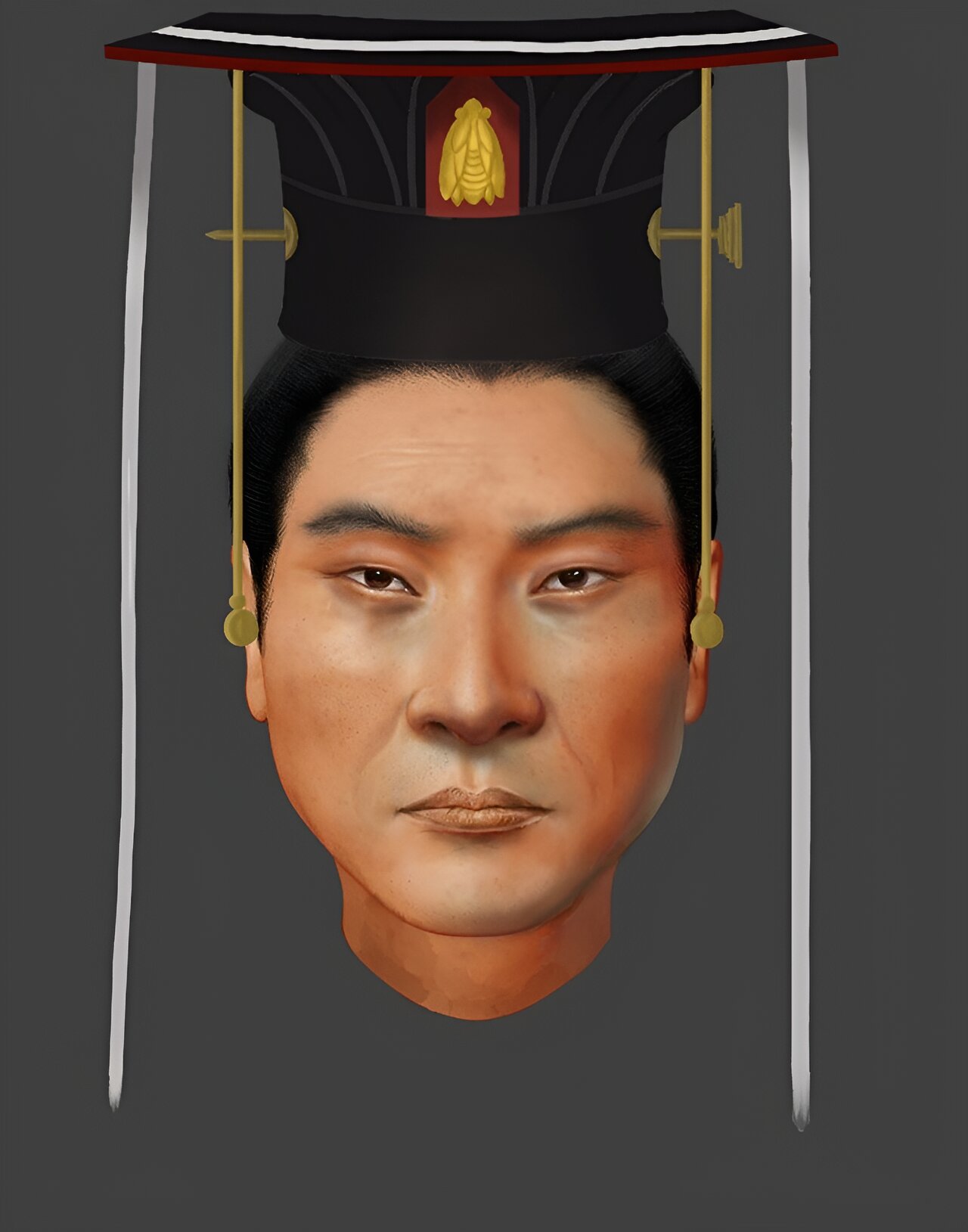History often remembers emperors for their deeds, but rarely for their faces. Now, thanks to a remarkable scientific feat, researchers have peered into the past and reconstructed the visage of Emperor Wu of Northern Zhou, who ruled China over 1,500 years ago.
Published in the journal Current Biology, this groundbreaking study not only offers a glimpse into Emperor Wu’s physical appearance but also sheds light on his possible cause of death and the migratory patterns of his people, the Xianbei nomads.
Emperor Wu’s reign, spanning 560-578 AD, was marked by military prowess and unification. He led the Northern Zhou dynasty to conquer rival dynasties and solidify control over northern China. But a shroud of mystery surrounded his ethnicity and appearance. Historical accounts hinted at “exotic” features for the Xianbei, but the truth remained elusive.
The key to unlocking this mystery lay in Emperor Wu’s tomb, discovered in 1996. It contained his remains, including a well-preserved skull. Advancements in ancient DNA research allowed scientists, led by Dr. Shaoqing Wen of Fudan University, to extract and analyze his genetic code. Over a million single-nucleotide polymorphisms (SNPs) were identified, revealing crucial information about the emperor’s physical traits.
By combining this genetic data with the skull’s structure, the team constructed a 3D facial reconstruction. The results shattered previous notions. Emperor Wu, instead of possessing exotic features, sported characteristics typical of East or Northeast Asians – brown eyes, black hair, and dark to intermediate skin.
“Our work brings historical figures to life,” explains Dr. Pianpian Wei, co-author of the study. “We can now see Emperor Wu not just as a name in a book, but as a real person.” This research goes beyond mere appearance. By analyzing Emperor Wu’s DNA, scientists found a genetic predisposition for stroke, potentially contributing to his untimely demise at the young age of 36. Historical records mentioning symptoms like aphasia and abnormal gait align with this possibility.
The study also sheds light on the Xianbei people’s migration patterns. Genetic analysis revealed intermarriage with the Han Chinese population after their southward migration. This finding offers valuable insights into the integration and exchange that occurred between different ethnicities in ancient China.
The researchers’ quest doesn’t end here. The next step involves analyzing the DNA of individuals from Chang’an, a historical capital and a vital hub on the Silk Road trade route. By unraveling the genetic makeup of these ancient inhabitants, they hope to gain a deeper understanding of migration patterns and cultural exchange within China throughout history.
This groundbreaking study paves the way for a future where science and history collaborate to paint a more vivid picture of the past. As we unlock the secrets encoded in ancient DNA, long-forgotten faces and stories will continue to emerge from the mists of time.
Source: Cell Press
